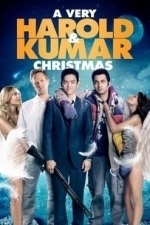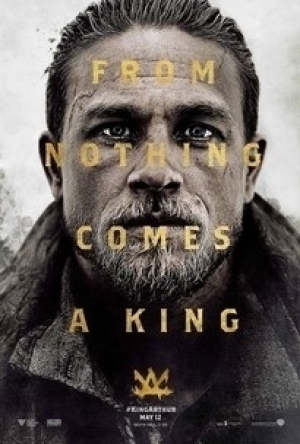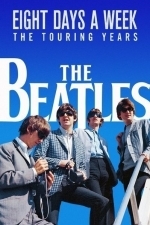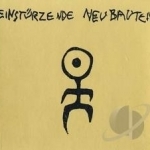Search
Darren (1599 KP) rated A Very Harold & Kumar Christmas (2011) in Movies
Jun 20, 2019
Story: The hijinks of this duo is always hilarious and this time is no different, getting themselves in all sorts of trouble as well as finding funny ways to get out of them. They always find colourful characters some seen before some new ones. It is all fun but not too serious and the story offers not too much more original than the first two. (7/10)
Actor Review: Kal Penn – The stoner friend who needs to learn to grow up and throughout the film he finally learns to. Continues to do a good job in the role showing he has some very good comic timing. (8/10)
kumar
Actor Review: John Cho – Has always been the more serious of the pairing and now has taken that too the next level. Just like Kal he is good again working to be more serious to his more laid back what will be role. Lesley’s Stud Muffin Award (8/10)
harold
Actor Review: Neil Patrick Harris – Always turns up as himself in these films and always steals the scene. This is no different making his character even funnier. Scene Stealer Award (9/10)
HPH
Actor Review: Danny Trejo – The disapproving father of Harold who starts out being very against Harold, but letting Harold prove he has what it takes to look after his daughter. Very much written for Trejo letting him poke fun at the characters he has created through the years. (8/10)
Actor Review: Amir Blumenfeld – Kumar’s friend who ends up taking everyone to a party helping leading to the mess the guys end up in. Good addition to the cast has some of the funnier scenes. (8/10)
Actor Review: Thomas Lennon – Has to look after his baby daughter and ends up in situations where the baby gets stoned by accident. They panic stricken character adds some many funny moments in this film. They Have the Laughs Award, Funniest Character Award (9/10)
Todd & Adrian with the stoned baby
Todd & Adrian with the stoned baby
Director Review: Todd Strauss-Schulson – This small time director steps up to create a good comedy. (8/10)
Comedy: Good comedy, very funny scenarios created. (8/10)
Special Effects: Pokes fun at the 3D era in the cinema with some funny special effects. (9/10)
Chemistry: Harold & Kumar have great chemistry throughout the film. (9/10)
Believability: I am sure some stoner have had some wild adventures not as wild as these guys but still similar. (6/10)
Chances of Tears: None (0/10)
Oscar Chances: NONE
Chances of Sequel: I am sure they have enough to make a sequel.
Suggestion: A comedy that should be enjoyed by all fans of the mature audience. If you like the first two you will like this one. If you want serious you are looking in the wrong place. (Enjoy The Trip)
Best Part: Clay doe scene.
clay
Kill Of The Film: By the waffle machine.
Funniest Scene: The stoned baby
Similar Too: Harold & Kumar’s previous adventures.
Overall: Outrageous comedy with plenty of laughs
Lesley’s Rating 60%
https://moviesreview101.com/2013/12/21/a-very-harold-kumar-3d-christmas-2011/
Actor Review: Kal Penn – The stoner friend who needs to learn to grow up and throughout the film he finally learns to. Continues to do a good job in the role showing he has some very good comic timing. (8/10)
kumar
Actor Review: John Cho – Has always been the more serious of the pairing and now has taken that too the next level. Just like Kal he is good again working to be more serious to his more laid back what will be role. Lesley’s Stud Muffin Award (8/10)
harold
Actor Review: Neil Patrick Harris – Always turns up as himself in these films and always steals the scene. This is no different making his character even funnier. Scene Stealer Award (9/10)
HPH
Actor Review: Danny Trejo – The disapproving father of Harold who starts out being very against Harold, but letting Harold prove he has what it takes to look after his daughter. Very much written for Trejo letting him poke fun at the characters he has created through the years. (8/10)
Actor Review: Amir Blumenfeld – Kumar’s friend who ends up taking everyone to a party helping leading to the mess the guys end up in. Good addition to the cast has some of the funnier scenes. (8/10)
Actor Review: Thomas Lennon – Has to look after his baby daughter and ends up in situations where the baby gets stoned by accident. They panic stricken character adds some many funny moments in this film. They Have the Laughs Award, Funniest Character Award (9/10)
Todd & Adrian with the stoned baby
Todd & Adrian with the stoned baby
Director Review: Todd Strauss-Schulson – This small time director steps up to create a good comedy. (8/10)
Comedy: Good comedy, very funny scenarios created. (8/10)
Special Effects: Pokes fun at the 3D era in the cinema with some funny special effects. (9/10)
Chemistry: Harold & Kumar have great chemistry throughout the film. (9/10)
Believability: I am sure some stoner have had some wild adventures not as wild as these guys but still similar. (6/10)
Chances of Tears: None (0/10)
Oscar Chances: NONE
Chances of Sequel: I am sure they have enough to make a sequel.
Suggestion: A comedy that should be enjoyed by all fans of the mature audience. If you like the first two you will like this one. If you want serious you are looking in the wrong place. (Enjoy The Trip)
Best Part: Clay doe scene.
clay
Kill Of The Film: By the waffle machine.
Funniest Scene: The stoned baby
Similar Too: Harold & Kumar’s previous adventures.
Overall: Outrageous comedy with plenty of laughs
Lesley’s Rating 60%
https://moviesreview101.com/2013/12/21/a-very-harold-kumar-3d-christmas-2011/
Bob Mann (459 KP) rated King Arthur: Legend Of The Sword (2017) in Movies
Sep 29, 2021
The Arthurian legend: but with Cockneys.
So, bit difficult to describe this one… so I asked my bloke Alfie from Londinium to explain what’s it all about…
“‘Ere, OK bruv. So this is dun by that geezer Guy Ritchie – yer know, the one that dun that Sherlock Holmes with the Iron Man geezer Robert Junior Downey, that one. His new film is a rip-roarin’ acshun movie what retells da Arfurian legend in a novel new way.
That Hulk bloke Eric Bana is Arfur’s farfer an’ ‘e’s ‘avin’ a few problems wiv ‘is bruvver Vortigern (Jude Law, who’s a bi’ ov a cockney ‘imself, but ‘ere speaks like a posh bloke. Know what I mean?) So ‘e (Vortigern dat is) gets some magical ‘elp from some slippery watery bints in a puddle and so ‘is dad puts ‘is God Forbid in a boat an’ sends ‘im down da river ter The Smoke ter live wiv some prozzies.
But ‘e grows up big an’ strong an’ ‘andy wiv a sword. His friends tell ‘im ter get aaaht ov town as da King’s blokes are lookin’ fer da young geezer who would be king. An’ e says like “Scapa Flow sowf ov da river at dis time ov night. Are yew mad?”. So e gets caught like an’ gets tested by some famous football bloke ter pull a big sword aaaht ov just a random bi’ ov stone (nod, nod, wink wink, nice twist – ssshhh!).
The Vortigern bloke is very cross an’ tries to kill ‘im but ‘e gets rescued by some bird who can make birds, lol, an’ other fings do what she wants. So can Arfur beat ‘is uncle? Gawdon Bennet, I’m not gon’a tell yew da whole darn fing! Yer’ll ‘ave ter go an’ watch i’ ter find out.”
Thanks Alfie. Couldn’t have said it better myself!
The quirky style of Guy Ritchie isn’t one that you would think would translate well to the Arthurian setting, and as the film starts you tend to think you were right! But if you give it a chance it wears you down into acceptance and then – ultimately – a lot of enjoyment.
Jude Law is deliciously evil mixed with a heavy dose of mad, and delivers the goods.
Charlie Hunnam who plays Arthur (no, I hadn’t heard of him either but he was in the “Lost City of Z”) does a decent job as the medieval hunk, although he seems at time to have taken voice coaching in ‘Olde-English’ from Russell Crowe, since the lad’s Geordie accent seems to wander from Cockney through central southern England to Liverpudlian at one point (definitely channelling a young John Lennon)! Relative newcomer, the Spanish actress Astrid Bergès-Frisbey is effectively weird as the mage.
Particularly noteworthy (no pun intended) is the superb action soundtrack by Daniel Pemberton (“Steve Jobs“, “The Man from U.N.C.L.E.“) which propels the action really well and contains some standout moments.
Also a standout in the technical categories is the editing by James Herbert, who did both of Downey Junior’s “Sherlock Holmes” films (in a similar style) and also “Edge of Tomorrow“. The style is typified with Arthur’s growth to manhood in the streets of London which is stylishly done.
I saw the film in 3D – not a particularly favourite format – but quite well done, although falls into the “trying too hard” category at times with lots of drifting embers… you know the sort.
It’s not bloody Shakespeare. It’s not even the bloody Arthurian legend as you know it. But it is bloody good fun if you let it in.
“‘Ere, OK bruv. So this is dun by that geezer Guy Ritchie – yer know, the one that dun that Sherlock Holmes with the Iron Man geezer Robert Junior Downey, that one. His new film is a rip-roarin’ acshun movie what retells da Arfurian legend in a novel new way.
That Hulk bloke Eric Bana is Arfur’s farfer an’ ‘e’s ‘avin’ a few problems wiv ‘is bruvver Vortigern (Jude Law, who’s a bi’ ov a cockney ‘imself, but ‘ere speaks like a posh bloke. Know what I mean?) So ‘e (Vortigern dat is) gets some magical ‘elp from some slippery watery bints in a puddle and so ‘is dad puts ‘is God Forbid in a boat an’ sends ‘im down da river ter The Smoke ter live wiv some prozzies.
But ‘e grows up big an’ strong an’ ‘andy wiv a sword. His friends tell ‘im ter get aaaht ov town as da King’s blokes are lookin’ fer da young geezer who would be king. An’ e says like “Scapa Flow sowf ov da river at dis time ov night. Are yew mad?”. So e gets caught like an’ gets tested by some famous football bloke ter pull a big sword aaaht ov just a random bi’ ov stone (nod, nod, wink wink, nice twist – ssshhh!).
The Vortigern bloke is very cross an’ tries to kill ‘im but ‘e gets rescued by some bird who can make birds, lol, an’ other fings do what she wants. So can Arfur beat ‘is uncle? Gawdon Bennet, I’m not gon’a tell yew da whole darn fing! Yer’ll ‘ave ter go an’ watch i’ ter find out.”
Thanks Alfie. Couldn’t have said it better myself!
The quirky style of Guy Ritchie isn’t one that you would think would translate well to the Arthurian setting, and as the film starts you tend to think you were right! But if you give it a chance it wears you down into acceptance and then – ultimately – a lot of enjoyment.
Jude Law is deliciously evil mixed with a heavy dose of mad, and delivers the goods.
Charlie Hunnam who plays Arthur (no, I hadn’t heard of him either but he was in the “Lost City of Z”) does a decent job as the medieval hunk, although he seems at time to have taken voice coaching in ‘Olde-English’ from Russell Crowe, since the lad’s Geordie accent seems to wander from Cockney through central southern England to Liverpudlian at one point (definitely channelling a young John Lennon)! Relative newcomer, the Spanish actress Astrid Bergès-Frisbey is effectively weird as the mage.
Particularly noteworthy (no pun intended) is the superb action soundtrack by Daniel Pemberton (“Steve Jobs“, “The Man from U.N.C.L.E.“) which propels the action really well and contains some standout moments.
Also a standout in the technical categories is the editing by James Herbert, who did both of Downey Junior’s “Sherlock Holmes” films (in a similar style) and also “Edge of Tomorrow“. The style is typified with Arthur’s growth to manhood in the streets of London which is stylishly done.
I saw the film in 3D – not a particularly favourite format – but quite well done, although falls into the “trying too hard” category at times with lots of drifting embers… you know the sort.
It’s not bloody Shakespeare. It’s not even the bloody Arthurian legend as you know it. But it is bloody good fun if you let it in.
Bob Mann (459 KP) rated The Beatles: Eight Days A Week - The Touring Years (2016) in Movies
Sep 29, 2021
A film worth getting into your life.
Reviewing documentaries is always a bit tricky, since it is often difficult to separate the quality of the film making from your emotional attachment to the subject material. In my case, my early life was saturated with Beatlemania. Although I was only 2 year’s old in 1963 at the start of it all, I had three older siblings who ramped up the excitement so much that it permeated my young mind. I still remember being vehemently “Sssshhed” since I was making too much noise during the live and ground-breaking “All you need is Love” telecast!
Ron Howard’s film focuses on “the touring years” which as depicted were truly manic, spanning from 1963 to 1966 before then skipping forward to 1969 for their final rooftop concert. This was in a time when airline travel was not the more comfortable and smoke-free environment it is today, so these worldwide trips much have been seriously grueling, even without the adoration that reached dangerous proportions when they reached their destinations.
Howard has clearly had his research team scour the world for archive clips since – whilst sensitively skipping some of the more ‘commonly seen’ materials, like the “jewelry shaking” clip – the film shows concert action I certainly had never seen before.
The film is also nicely interlaced with celebrity cameos recalling their linkage to the Fab Four’s performances (often moving, like Whoopi Goldberg’s) and the group’s “legacy” effect on modern-day art (in Richard Curtis’s case rather less convincing). One of the most striking of these is that of Sigourney Weaver recounting her attendance as a pre-teen at the Beatle’s Rose Bowl performance in LA. There, in the newsreel footage of adoring fans, is the unmistakable face of the ‘before she was famous’ actress: at least I hope it really was her (as the clip’s timing implied) and not a lookalike, since that would be really disappointing!
Also featuring – although not enough for my liking – are Paul McCartney and Ringo Starr, recounting their feelings about the events and what happened behind the closed doors of hotel rooms or – most notably – a meat truck.
What shines through is the honesty and intelligence of Lennon and McCartney, typified by the idiotic questioning of journalists, some of who had done so little homework they didn’t even know there wasn’t a Beatle called Eric! Some of the group’s off the cuff responses were priceless: “What is the secret of your success?” asks one journo. “We don’t know” quips John. “If we knew we’d form another group and be managers.”
While the film has enormous energy in its first two thirds, it rather runs out of momentum in its final reel…. a bit like the Beatles did in fact. It also has elements of gimmickry like the smoke rising from photo cigarettes which gets a tad tiresome after the tenth occurrence.
But this is a very watchable and enjoyable rock down memory lane for 50-somethings and for any fans old and young of the Fab Four’s music. Highly Recommended. Note that the documentary itself is about 90 minutes in length, with another 30 minutes of live concert music tagged onto the end post-titles (which for travel reasons I was unfortunately unable to stay for so can’t comment on).
Ron Howard’s film focuses on “the touring years” which as depicted were truly manic, spanning from 1963 to 1966 before then skipping forward to 1969 for their final rooftop concert. This was in a time when airline travel was not the more comfortable and smoke-free environment it is today, so these worldwide trips much have been seriously grueling, even without the adoration that reached dangerous proportions when they reached their destinations.
Howard has clearly had his research team scour the world for archive clips since – whilst sensitively skipping some of the more ‘commonly seen’ materials, like the “jewelry shaking” clip – the film shows concert action I certainly had never seen before.
The film is also nicely interlaced with celebrity cameos recalling their linkage to the Fab Four’s performances (often moving, like Whoopi Goldberg’s) and the group’s “legacy” effect on modern-day art (in Richard Curtis’s case rather less convincing). One of the most striking of these is that of Sigourney Weaver recounting her attendance as a pre-teen at the Beatle’s Rose Bowl performance in LA. There, in the newsreel footage of adoring fans, is the unmistakable face of the ‘before she was famous’ actress: at least I hope it really was her (as the clip’s timing implied) and not a lookalike, since that would be really disappointing!
Also featuring – although not enough for my liking – are Paul McCartney and Ringo Starr, recounting their feelings about the events and what happened behind the closed doors of hotel rooms or – most notably – a meat truck.
What shines through is the honesty and intelligence of Lennon and McCartney, typified by the idiotic questioning of journalists, some of who had done so little homework they didn’t even know there wasn’t a Beatle called Eric! Some of the group’s off the cuff responses were priceless: “What is the secret of your success?” asks one journo. “We don’t know” quips John. “If we knew we’d form another group and be managers.”
While the film has enormous energy in its first two thirds, it rather runs out of momentum in its final reel…. a bit like the Beatles did in fact. It also has elements of gimmickry like the smoke rising from photo cigarettes which gets a tad tiresome after the tenth occurrence.
But this is a very watchable and enjoyable rock down memory lane for 50-somethings and for any fans old and young of the Fab Four’s music. Highly Recommended. Note that the documentary itself is about 90 minutes in length, with another 30 minutes of live concert music tagged onto the end post-titles (which for travel reasons I was unfortunately unable to stay for so can’t comment on).



